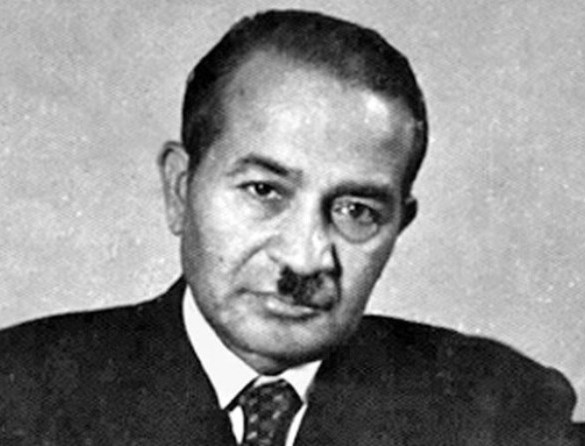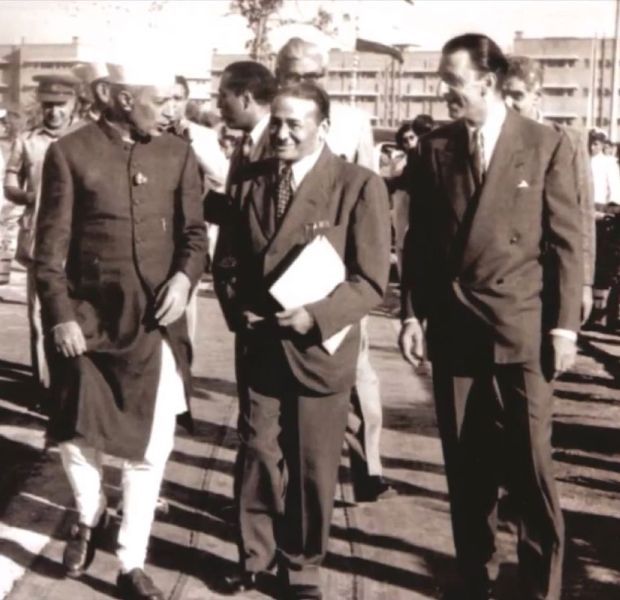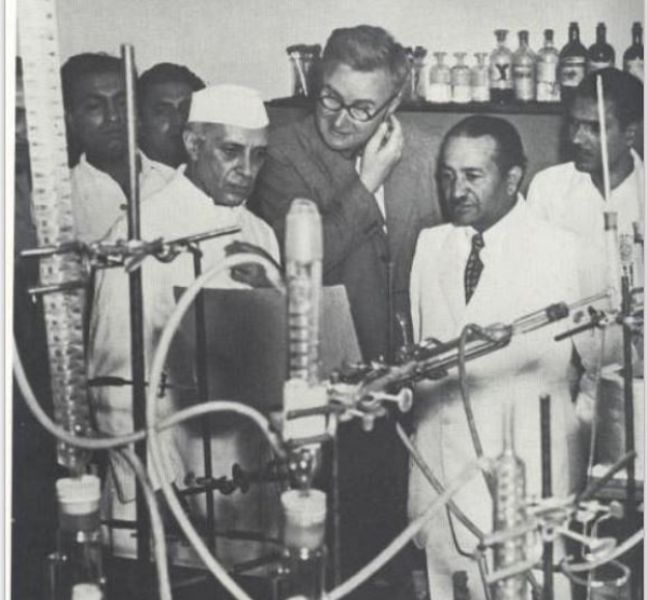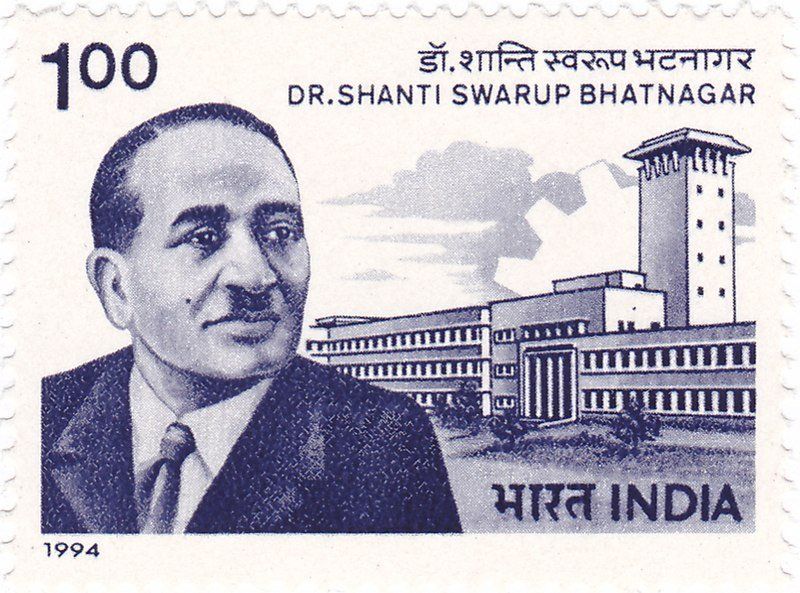Shanti Swaroop Bhatnagar Age, Death, Wife, Family, Biography & More
Some Lesser Known Facts About Shanti Swaroop Bhatnagar
- His father joined the Brahmo Samaj with Lala Raghunath Sahai.
- After his father’s demise, he lived with his maternal grandfather, Pearcy Lal, an engineer and one of the first to qualify as an engineer from the famous Roorkee College.
- He took an interest in his grandfather’s instruments, Euclid and algebra, and in making mechanical toys at a very early age.
- Bhatnagar developed an interest in Urdu poetry since childhood. His maternal uncle Munshi Hargopal Tufta was a great Urdu poet and was titled ‘Mirza’ by the noted Urdu poet Mirza Ghalib.
- His paternal grandfather, Rai Bahadur Munshi Manohar Lal Bhatnagar, held a judicial post and was considered a very honest person.
- Moulvi Talib Ali Paband, Mohd. Ashraf and Lala Bishen Narain Mathur taught him the basics of sciences.
- P. E. Richards, an Oxford graduate, was his professor of English Literature in the Dyal Singh College. His wife, Norah Richards, started the Saraswati Stage Society in Lahore. Later, Bhatnagar became an active member of the society.
- He had a fascination for conducting experiments which involved the production of string telephones, electrical fields, and electrical batteries. He wrote a paper on “Fermentation Phenomena of Pomegranate Juice” which was published as an article.
- The first research done by Bhatnagar was under his M.Sc. degree on the topic of surface tension. He did this research with Professors K. T. Compton and A. H. Compton. The thesis was titled “ The Effect of Absorbed Gases on the Surface Tension of Water.”
- His wife was the daughter of his father’s friend Raghunath Sahai who was also the headmaster of Bhatnagar at the Dyal Singh College.
- Bhatnagar’s daughter Santosh Kumari married Ramesh Prashad Bhatnagar. His son Anand Swarup got married to Shakuntala Bhatnagar on 11 July 1943. His younger daughter, Sudha, was born in 1927 and his younger son, Devendra, was born in 1929.
- Bhatnagar failed in B. Sc as his marks in chemistry were insufficient. He then pursued his B. Sc with honours in Physics in 1916.
- At Forman Christian College Bhatnagar became a demonstrator in the physics and chemistry departments. Later, at Dyal Singh College he became the Senior Demonstrator.
- Bhatnagar had solved many Industrial problems. The first problem he faced was to search for methods to convert bagasse into foodcake for cattle.
- He solved the mud problem faced by the Messrs Steel Brothers & Co., London. He lowered the viscosity of the mud suspension and increased the stability against the action of the electrolytes by adding an Indian gum.
- Messrs Steel Brothers & Co., London offered him a huge amount which he used to establish the Industrial Research Department where important research and investigations were carried out.
- The investigations carried out at the Industrial Research Department included – the deodorization of waxes, increasing the flame height of kerosene, lubrication, prevention of corrosion and utilization of waste products in the vegetable oil and mineral oil industries.
- Bhatnagar also resolved various industrial problems including industrial problems of Delhi Cloth & General Mills, J.K. Mills Ltd. of Kanpur, Ganesh Flour Mills Ltd. of Layallapur, Tata Oil Mills Ltd. of Bombay, and Steel Brothers & Co. Ltd. of India.
- He was introduced to professors like Haber, Freundlich, Bodenstein, Nernst, Einstein, Planck, Urbain, and Perrin during his research study at the Kaiser Wilhelm Institute, Dahlem, Berlin, and at the Sorbonne, Paris during the summer vacations at the London University.
- After D. Sc, he received many offer letters including – Dehra Dun for Forest Research, the Dyal Singh College as Principal, and the North Western Railway as an analytical chemist.
- Bhatnagar was offered a professorship in BHU by Pandit Madan Mohan Malaviya. In 1921, Bhatnagar joined Banaras Hindu University (BHU) as a professor of chemistry. After BHU, he was appointed as a professor at the Punjab University.
- He served at Punjab University for 16 years and his major studies include colloid chemistry and magneto-chemistry. The years he spent at Punjab University were considered the most active period of his life.
- In 1928, Bhatnagar with Dr N. Mathur invented an instrument called Bh-M-I-B (Bhatnagar-Mathur Magnetic Interference Balance) for measuring magnetic properties.
- Bhatnagar was appointed the Director of the Council of Scientific and Industrial Research in 1940. He also was the Secretary to the Ministry of Education in 1947 and 1948.
- Bhatnagar was appointed the first secretary of the Ministry of Natural Resources and Scientific Research set up in 1951. He also served as the Secretary to the Ministry of Education in 1947 and 1948.
- In 1953, he became the first chairman of the University Grants Commission.
- Bhatnagar is also known as the “Father of Indian Research Laboratories.” He played a vital role in establishing 12 national laboratories in India including the Central Food Processing Technological Institute at Mysore, the National Chemical Laboratory at Pune, and the National Metallurgical Laboratory at Jamshedpur.
- A poetry collection was created by him titled ‘Lajwanti’ in which he wrote many poems in memory of his wife.
- Bhatnagar wrote the book ‘Physical Principles and Applications of Magneto Chemistry’ co-authored by K. N. Mathur. He also wrote the ‘Kulgeet’ of Banaras Hindu University (BHU).
- After his demise, many prominent leaders expressed their condolences including Jawaharlal Nehru. After his death, Jawaharlal Nehru said,
I have always been associated with many prominent figures eminent in other ways, but Dr Bhatnagar was a special combination of many things, added to which was a tremendous energy with an enthusiasm to achieve things”
- A Commemorative stamp was issued in 1994 on the birth anniversary of Shanti Swaroop Bhatnagar.














